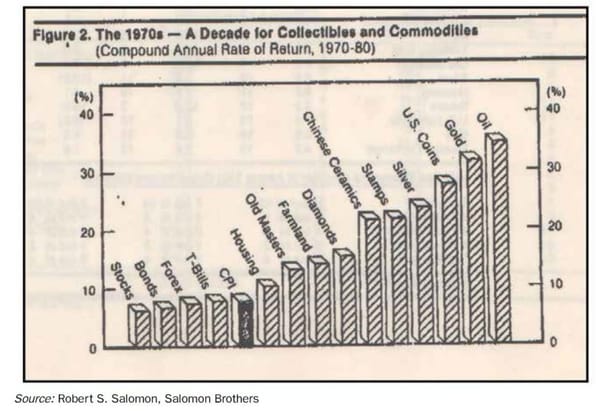US federal budget and US corporates - expect far higher corporate taxes
A brief analysis of United States federal budget obligations and what it means for US companies, investors, and taxpayers
We often hear from politicians that US budgets could be balanced, everyone could have free education, and medical care would be free, if billionaires would just pay “their fare share”. But is this realistic? Let’s consider just how indebted the United States really is as of 09/26/2021 (figures below sourced from US Treasury, US Federal Reserve):
- $21.5T in social security liabilities
- $33.3T in medicare liabilities
- $28.8T in national debt
- $156.5T in total unfunded liabilities
Basically, the United States government has current promises to pay ~160T in liabilities. Meanwhile, we have ~178.5T in national assets. These assets include:
- The total value of the US stock market
- The total value of US residential and commercial real estate
- The total value of US land
Liabilities per citizen are just under $500k. What this means is if the US wanted to pay for everything is has currently promised, today, it would need to liquidate ~88% of all assets held by anyone in the United States - all corporations, all farmers, all billionaires, all single family homes, all commercial real estate, all mining and water rights. In practice, there is no buyer or group of buyers in existence which could absorb all the United States, but it’s still interesting to think about just how many promises we’ve made.
Another way to think about this is to consider what percentage of GDP would need to be captured, for how long, to cover US liabilities. According to the BEA, 2021 GDP is expected to come in at 22.73T. At first glance, this seems like a huge percentage of the national debt and total unfunded liabilities - hey, we could do this on a 20 year mortgage! But first, back out the “non-productive” part of these figures:
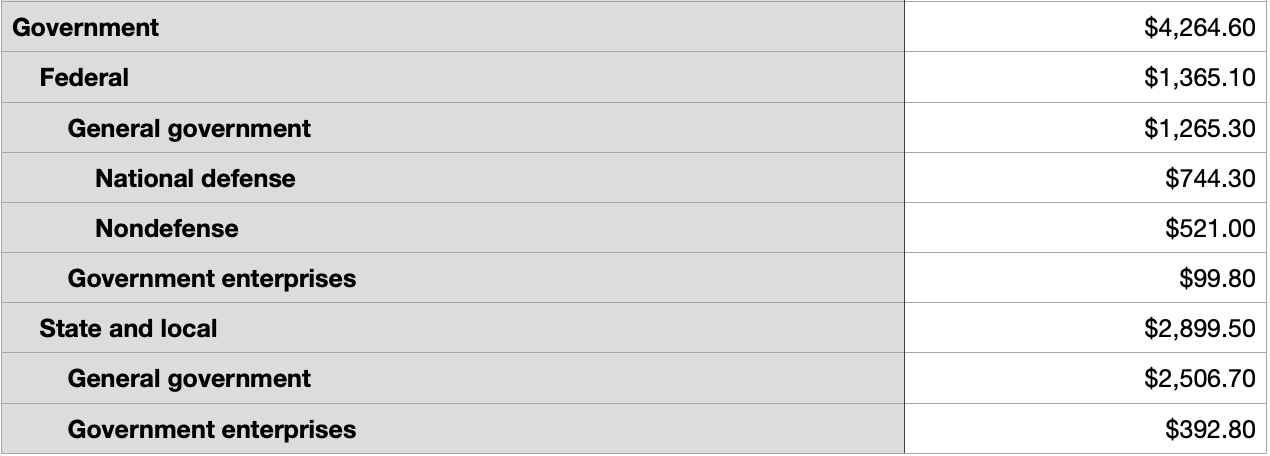


Federal, state and local governments alone account for more than 20% of total GDP. The Federal Reserve system is another 5%, and legal and accounting services, most of which relate to government compliance, are another 8-10%. If we generously say that half of legal and accounting work is nonsense that wouldn’t exist if government were smaller, we can assume that around 30% of the total GDP of the United States is consumption rather than true economic output. At best, most of this money gets sloshed back into stock market and real estate values, and at worst, it simply disappears into a black hole.
After subtracting the non-productive parts of the economy from GDP, we have 16T left to try to capture enough to pay down US liabilities. An important question to ask though, is how much of GDP is actually net profit? US corporate profits run around $8T/year. The part that isn’t profits is paid out as wages and spent on raw materials and imports. The US also has an ~$1T per year trade imbalance, meaning that we have a net flow of money out of the US each year to pay for imported goods and services.
A quarter of the US workforce is employed directly or indirectly by the government, and total wages run around 9T. On average, in all but the most elite jobs, the total compensation of federal workers is quite a bit higher than private sector workers, so I’m running on the assumption that around a third of total wages are paid to government workers.

In essence, we’ve got $8T in corporate profits and $6T in non-public wages to feed the beast with. Despite a brief spike in the personal savings rate in 2020 due to lockdowns and stimulus payments, we’re back down to a long term savings rate of 8-10% - meaning that of that $6T in wages, only $500-600B of it isn’t being spent or paid in taxes already.
In short, 56M retirees, 62M medicare enrollees, 82.7M medicaid recipients, 40.8M food stamp recipients, and nearly 23M government workers (and yes, there is some double counting in this groups) depend on US corporations and 120M private workers to keep paying the bills.

The US is currently running a federal budget deficit of around $3T. Annualized, this is ~10% of the total national debt or 2% of total liabilities.
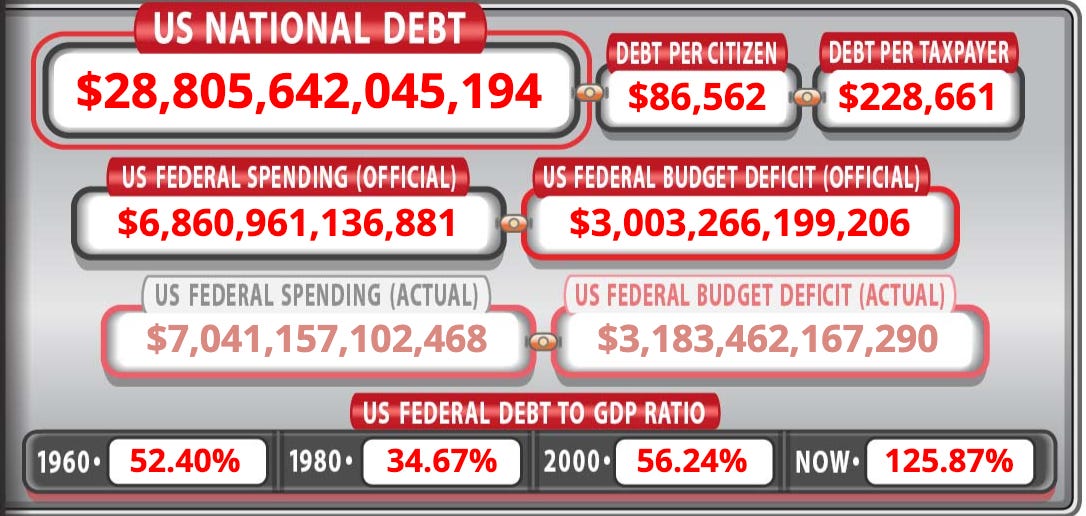
It doesn’t take a genius to figure out that this situation is unsustainable, or to realize that even if the debt is “inflated away”, the debt itself is only a small fraction of total US obligations. Money printing will continue to cause higher inflation, already at the highest levels since the early 1980s. Higher inflation will increase the costs of US liabilities like social security and medicare, increasing the budget deficit. Kicking the can down the road truly can’t work forever, even if it does continue for a while longer.
Given that the federal government can’t auction off assets to the highest bidder to reduce obligations, there are only a few possible outcomes (and possibly some combination of the following):
- We continue to try to inflate our way out. We become increasingly reliant on foreign debt. The dollar plummets, our credit rating suffers, and inflation crushes the US consumer, with corporate earnings following.
- (Much) higher taxes on corporate profits.
- Reduced government services.
You don’t need to have a graduate degree in economics to see that #1 is unsustainable and #3 is politically difficult. The most likely source to do the bulk of the lifting in repairing the federal budget and cover US obligations is corporate profits. This is both the only real source and the only approach that’s politically possible.
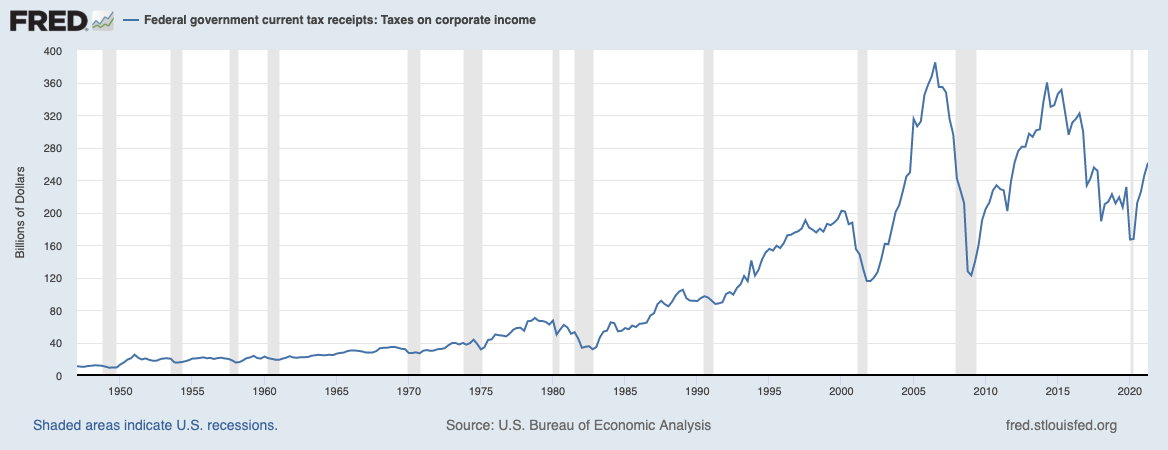
Corporate tax receipts are currently running around $1T, while pre-Trump receipts were 30-40% higher. Even going to 2015 corporate tax levels would barely make a dent in the budget deficit. A much, much bigger chunk of those 8T in corporate profits will need to go to the federal government - around 50% of corporate profits should cover it.
Should tax increases this extreme happen, there will be a large corporate exodus from the United States, and the available tax pool will decrease. The federal government will want to prevent this, so capital controls and stricter controls on offshore profits by US corporates are also likely.
Raising corporate taxes by such a large amount would mean lower dividends and buybacks for investors (and the Democrats are already moving to put a tax on corporate buybacks), which would undoubtedly trigger a stock market crash.
The truth is that there is no easy answer to US budget woes. US corporate profits are where the bulk of “dry powder” can be found. Higher individual taxes would be a drop in the bucket unless standards of living were reduced dramatically - which would have a knock-on effect on corporate profits and be wildly unpopular. The US consumer, with such a low savings rate, does not have much to offer.
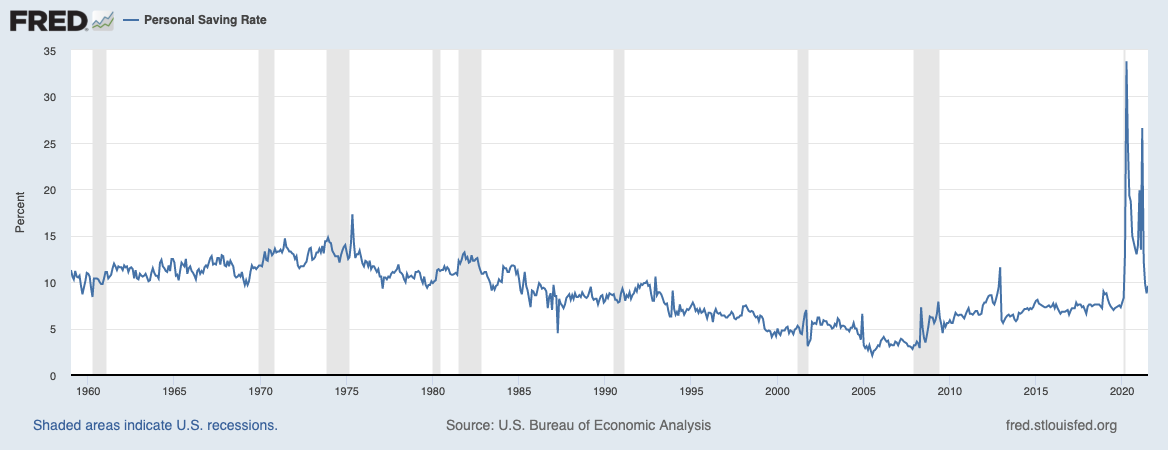
It’s likely that in the end, a combination of higher corporate taxes, lower government spending, and making token examples of “anyone who doesn’t pay their fare share” will all be part of the strategy to stave off a much more dramatic currency decline and/or defaults on obligations.
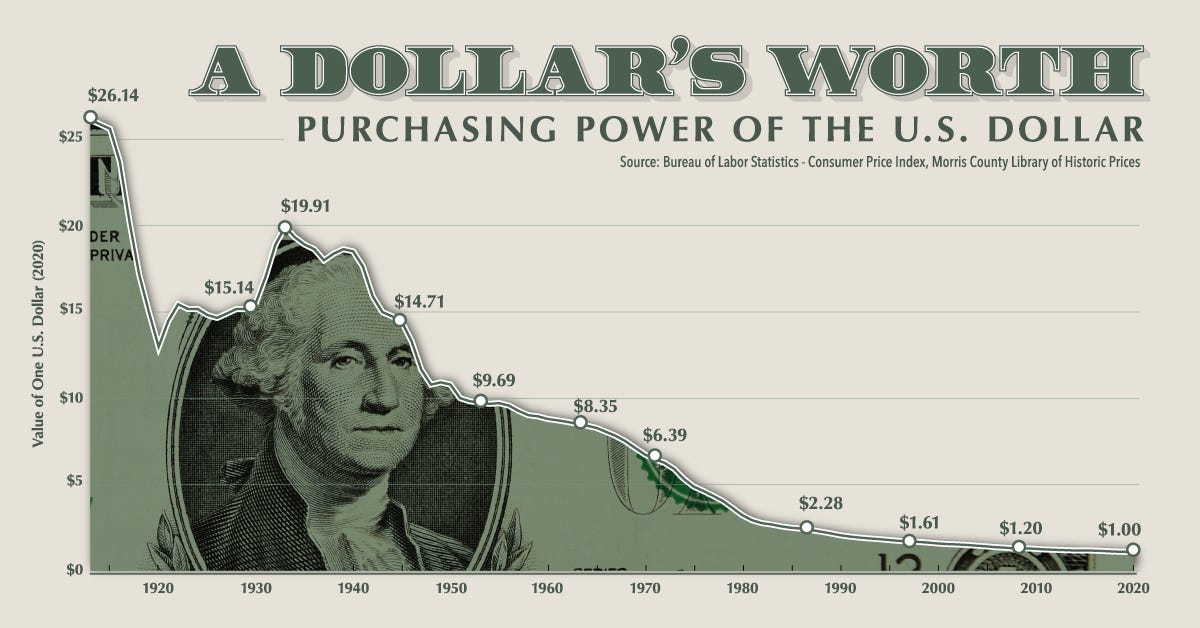
US policy makers must make a decision - tax US corporates at a higher rate and allow an asset bubble crash - or continue pursuing the path of lower short term pain and witness Argentine style inflation and currency problems.
As an investor, to me there is a single solid takeaway - diversify out of US markets and assets. Consider which companies are subject to US taxes. Given that we are at the intersection of peak earnings, peak valuations, peak government spending, peak budget deficits, and trough tax rates, any long term investor should be prepared to batten down the hatches for much choppier seas and serious valuation contractions.


